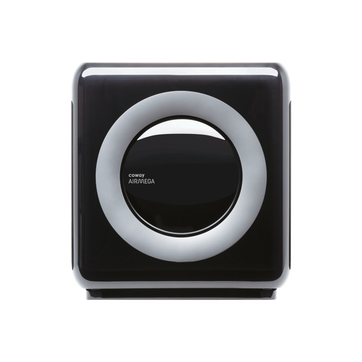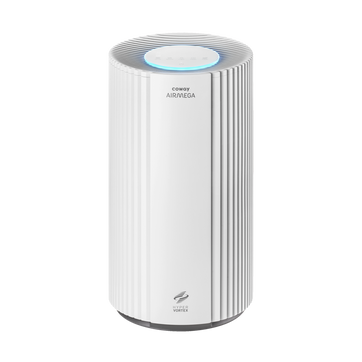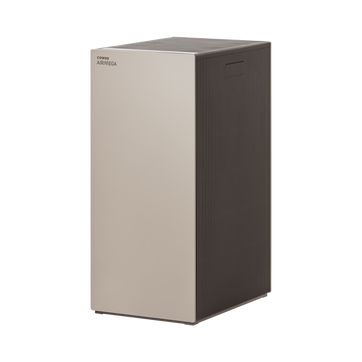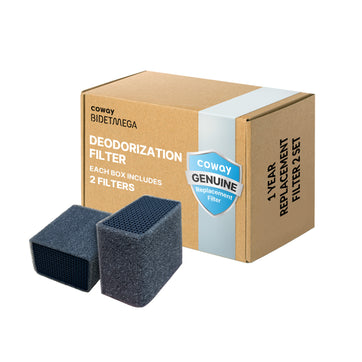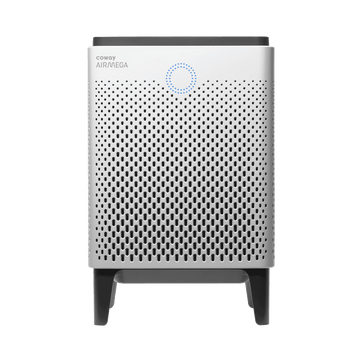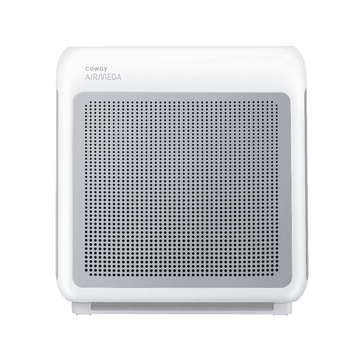
Beyond Dusting: Smart Solutions for a Dust-Free Home
Indoor air quality has become increasingly important for our health and well-being, yet one of its biggest enemies often goes underestimated. We’re talking about dust.
While many of us likely view dust as just an unsightly nuisance that settles on furniture, its impact on our health can actually be far more serious than just triggering the occasional sneeze. Behind those innocent-looking particles lies a complex mixture of substances that could be affecting your family's health in ways you might not expect.
Understanding the “Enemy” Within
The composition of household dust is surprisingly complex and potentially hazardous. What appears as simple gray particles to the naked eye is actually a troubling cocktail of various substances.
The primary components of household dust typically include:
- Dead skin cells: We naturally shed skin cells as part of our regenerative process.
- Dust mites: Microscopic creatures feed on dead skin cells.
- Dead insect particles: Yes, really.
- Soil particles: These are tracked indoors by us and our pets.
- Pollen: Plant reproductive material enters through windows and doors.
- Microplastic particles: These are tiny fragments from synthetic materials and products.
- Bacteria: Various microscopic organisms comprise bacteria
- Hair: Dust contains both human and pet hair.
- Clothing/textile fibers: These small threads break off from fabrics.
Each speck can contain everything from outdoor pollutants and pet dander to dust mite debris and potentially toxic substances. In older homes, this mixture becomes even more concerning, as legacy contaminants like lead dust can persist in the environment for years, posing serious health risks, particularly to young children.

What Is The Health Burden of Dust?
The impact of dust on human health extends far beyond the visible discomfort of sneezing and coughing. When these microscopic particles enter our respiratory system, they can trigger a cascade of health issues. For individuals with asthma or allergies, dust can act as a constant irritant, leading to chronic inflammation of the airways and persistent respiratory problems. Even more concerning is the potential for dust to carry harmful bacteria and viruses, creating an invisible highway for pathogens throughout our homes.
Recent studies have shown that poor indoor air quality, often exacerbated by excessive dust, can affect cognitive function and sleep quality. Children, elderly individuals, and those with compromised immune systems are particularly vulnerable to these effects. The presence of dust mites, which thrive in dusty environments, adds another layer of complexity to the problem, as these microscopic creatures are one of the most common triggers for year-round allergies and asthma.
The Revolution in Air Purification
Modern technology has transformed our ability to combat indoor dust. Airmega air purifiers are equipped with advanced filtration systems and can capture particles as small as 0.01 microns1, a feat that would have seemed impossible just a few decades ago. These systems work tirelessly to create cleaner indoor environments, using sophisticated multi-stage filtration processes to remove not just dust, but also other airborne contaminants that might be hitching a ride on dust particles.
We’ve pioneered breakthrough technologies such as the HyperCaptive™ filtration system, which has demonstrated remarkable efficiency in removing airborne particles. These advanced systems don't just filter air; they create a comprehensive cleaning cycle that continuously works to maintain better air quality throughout your home.
Prevention Is The First Line of Defense
While air purification technology plays a crucial role in dust control, the most effective strategy begins with prevention. The surprising fact that nearly two-thirds of household dust originates from outside underscores the importance of creating effective barriers at every entry point. This understanding has led to the development of sophisticated entry systems in modern homes, incorporating features like specialized door mats and air locks that help minimize the infiltration of outdoor particles.
- Hard-surface flooring proves superior to carpeting for dust control, as it provides fewer places for particles to hide and makes thorough cleaning much more straightforward. Regular sweeping and mopping can effectively remove dust instead of it becoming trapped in carpet fibers.
- Window treatments can dramatically affect dust accumulation in your home, with washable blinds or shutters generally collecting less dust than heavy fabric curtains that can trap and hold particles. These heavier fabrics often require more frequent and intensive cleaning to maintain a dust-free environment.
- Furniture with smooth, non-porous surfaces like leather, vinyl, or polished wood tends to accumulate less dust than upholstered pieces with textured fabrics. These smoother materials can be quickly wiped clean, while fabric upholstery often needs vacuuming or professional cleaning to remove embedded dust.
- Modern interior design is increasingly embracing minimalist aesthetics with clean lines and simple surfaces, which naturally supports better dust control. This trend aligns well with both contemporary style preferences and practical maintenance considerations.
The Role of Regular Maintenance
Maintaining a low-dust environment requires a consistent and well-planned approach to cleaning. Modern cleaning techniques have evolved beyond simple dusting and vacuuming to incorporate sophisticated tools and methods that more effectively capture and remove dust particles. High-filtration vacuum cleaners with True HEPA filters have become essential tools in this battle, capable of trapping the finest particles that older vacuum models would simply recirculate into the air.
Proper humidity control is often overlooked in dust management. Maintaining optimal humidity levels between 30% and 50% can significantly impact dust mite populations and the overall accumulation of dust in your home. Too much humidity can promote dust mite growth, while too little can cause particles to become more airborne.
Specialized Solutions for Unique Challenges
Different households face varying challenges when it comes to dust control. Pet owners, for instance, must contend with additional sources of dust and dander, requiring specialized filtration solutions and more frequent cleaning routines. Allergy sufferers might need to create dedicated "clean rooms" with enhanced filtration systems, particularly in bedrooms where people spend many hours each day.
The Future of Indoor Air Quality
As our understanding of indoor air quality continues to evolve, so do the technologies and methods available for dust control. Smart home integration is revolutionizing how we monitor and manage indoor air quality, with automated systems that can adjust filtration levels based on real-time air quality measurements. This technological evolution promises even more effective solutions for maintaining cleaner indoor environments in the future.
Modern technology has transformed our ability to combat indoor dust, with recent expert recognition confirming this advancement. The Coway Airmega IconS, highlighted by Rolling Stone for its exceptional ability to combat airborne particles, uses innovative HyperCaptive™ filtration technology to capture particles as small as 0.01 microns. The UK's Scientific Advisory Group for Emergencies confirms that True HEPA-equipped air purifiers like these are the most effective solution for managing indoor air quality, especially when outdoor ventilation isn't practical, marking a new era in dust control technology.
Creating Your Path to Cleaner Air
The path to better indoor air quality requires a personalized approach based on your home's specific challenges, from location to health needs. While maintaining a dust-free home is about aesthetics, it's primarily about health—you can achieve this through a combination of prevention, technology, and regular maintenance.
Remember that every step taken toward better dust control is an investment in your family's health and well-being, contributing to not just cleaner air, but also to improved overall quality of life. As we continue to spend more time indoors, the importance of maintaining high-quality indoor air cannot be overstated. The future of healthy living starts with the air we breathe at home.
Ready to conquer dust? Explore our range of advanced air purifiers designed to keep your space virtually dust-free.
Sources:
National Center for Healthy Housing - Dust
Martha Stewart - What Is Dust Exactly—and How to Reduce It in Your Home
EPA - Protect Your Family from Sources of Lead
Sleep Foundation - Humidity and Sleep
Disclaimers
1Coway air purifiers have been proven to trap dust, pollen, dander, viruses and bacteria in the air based on KCL (Korea Conformity Laboratories) testing.They have been tested in a 30㎥ size chamber according to the Korea Air Cleaning Association standard (SPS-KACA 002-132:2022 Modified) to measure the 0.01㎛ size of particle removal rate. It was tested on maximum airflow speed in normal room temperature and humidity conditions. The performance may vary in the actual living environment of customers.
→ Tested with Airmega Aim, 50, 100, 150, 160, Tower AP-1216L, Mighty AP-1512HH, MightyS AP-1512HHS, 200M, Icon, IconS, 230, 240, 250, 250 Art, 250S, 300, 300S, 350, 400, 400S, 450, ProX
299.97% of viruses, bacteria, fungi and pollen were verified to be removed from the air for Coway air purifiers which have Green True HEPA™ filter applied based on the Japan Food Research Laboratories(JFRL) testing according to JEM 1467 standard.
→ Tested with Coway Airmega Mighty AP-1512HH, MightyS AP-1512HHS, 250, 250 Art, 250S, 300, 300S, 400, 400S
→ All tested by JFRL and received above result within below time.
4The concentration of ammonia, acetaldehyde and acetic acid were proven to be removed within 30 minutes by FCG Research Institute, Inc. Human Life Science Lab. It is not a demonstration result in the actual use space. Not all odors and gases may be supported. → Tested with Coway Airmega 150, 160, Mighty AP-1512HH, MightyS AP-1512HHS, 400, 400S
5The coverage area of the air purifier is based on an area where the air cleaner can make two air changes per hour (ACPH). An air change per hour translates to how many times an air purifier can clean an area, assuming the height of a ceiling to be 8 ft, in one hour. Therefore ** means two air changes per hour means that the cleaner can clean the area once every 30 minutes and * means air changes per hour means that the air purifier can clean the area once every 60 minutes.
10Terms and conditions apply. Discounts, including promotions, coupons, bundle discount and subscription discount, cannot be stacked on top of other coupons. During promotional periods, discount codes will not be able to be applied to orders. Promo codes may apply to products only—filters, accessories, and new products within 3 months of the release date are not included.
11Based on Coway R&D internal laboratory testing, activated carbon filtration was shown to remove up to 95% of ammonia odors within 40 minutes, and up to 99% of fecal odors within 20 minutes. Actual performance may vary depending on usage conditions.

